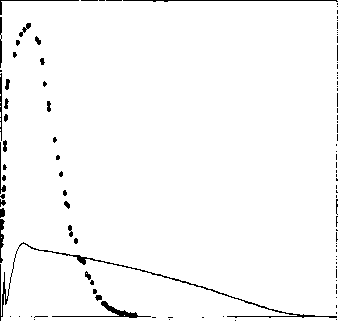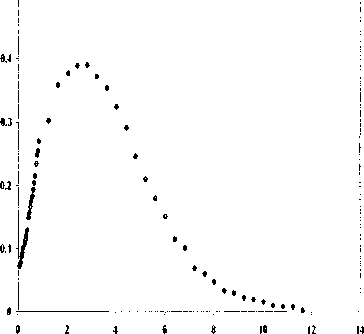polymers from iSAFT. The pure component parameters used to calculate the surface
tension of these real components were regressed to their bulk phase behavior. The
study clearly demonstrates that both bulk phase behavior and interfacial properties
can be described within the single framework of iSAFT (with the same set of pa-
rameters for both the systems). The success of the theory motivates us to extend
it to more complex systems, like copolymers and polymer brushes. However, few
shortcomings in iSAFT prevent us from doing so.
0.25
0.2
0.05

0 5 10 15 20 25 30 35 40 45 50
(b)

Figure 3.3: (a) Comparison of the density profiles of a single 50-mer hard chain tethered
to a hard surface (at z — 0) from simulation (symbols) and iSAFT (solid line), (b) Density
profile of a single 50-mer ideal gas chain tethered to a hard surface (at z = 0).
The approximations in iSAFT are most accurate for the average segment density of
homonuclear polymers. If the segments on the polymer are too dissimilar, the theory
becomes less accurate. Even for homonuclear polymers, iSAFT does not constrain
78
More intriguing information
1. The Values and Character Dispositions of 14-16 Year Olds in the Hodge Hill Constituency2. The name is absent
3. Implementation of the Ordinal Shapley Value for a three-agent economy
4. WP 1 - The first part-time economy in the world. Does it work?
5. Plasmid-Encoded Multidrug Resistance of Salmonella typhi and some Enteric Bacteria in and around Kolkata, India: A Preliminary Study
6. What Lessons for Economic Development Can We Draw from the Champagne Fairs?
7. The name is absent
8. IMPROVING THE UNIVERSITY'S PERFORMANCE IN PUBLIC POLICY EDUCATION
9. The name is absent
10. Government spending composition, technical change and wage inequality